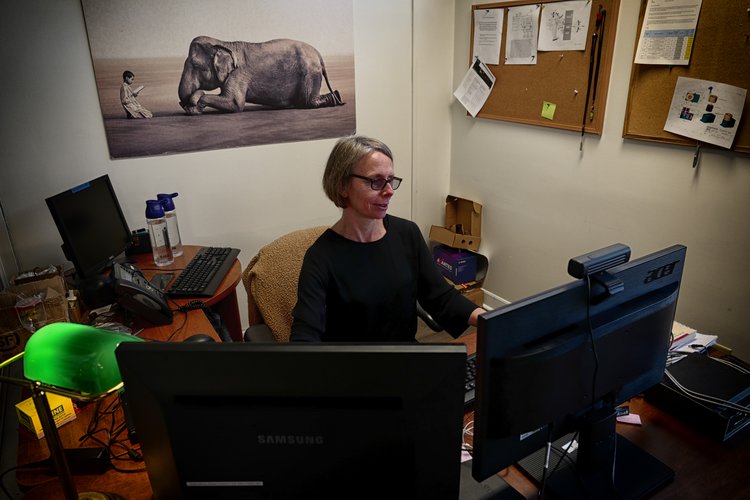The Definitive Guide to Spectrophotometers
The Definitive Guide to Spectrophotometers
Blog Article
The 10-Minute Rule for Uv/vis
Table of ContentsUv/vis - An OverviewThe smart Trick of Circular Dichroism That Nobody is DiscussingCircular Dichroism Fundamentals ExplainedHow Circularly Polarized Luminescence can Save You Time, Stress, and Money.The Basic Principles Of Circularly Polarized Luminescence

Spectrophotometry is most commonly applied to ultraviolet, visible, and infrared radiation, modern spectrophotometers can question wide swaths of the electro-magnetic spectrum, including x-ray, ultraviolet, visible, infrared, and/or microwave wavelengths. Spectrophotometry is a tool that depends upon the quantitative analysis of particles depending on how much light is soaked up by colored substances.
What Does Circular Dichroism Do?
A spectrophotometer is typically used for the measurement of transmittance or reflectance of solutions, transparent or nontransparent solids, such as polished glass, or gases. Although many biochemicals are colored, as in, they take in noticeable light and for that reason can be measured by colorimetric procedures, even colorless biochemicals can frequently be transformed to colored compounds ideal for chromogenic color-forming responses to yield compounds ideal for colorimetric analysis.: 65 Nevertheless, they can likewise be created to determine the diffusivity on any of the listed light varieties that typically cover around 2002500 nm using various controls and calibrations.
An example of an experiment in which spectrophotometry is utilized is the decision of the equilibrium constant of an option. A particular chain reaction within a solution may occur in a forward and reverse direction, where reactants form items and items break down into reactants. At some time, this chain reaction will reach a point of balance called an equilibrium point.
Uv/vis/nir - Questions
The quantity of light that travels through the option is a sign of the concentration of specific chemicals that do not permit light to travel through. The absorption of light is because of the interaction of light with the electronic and vibrational modes of molecules. Each kind of molecule has a private set of energy levels related to the makeup of its chemical bonds and nuclei and hence will absorb light of specific wavelengths, or energies, leading to unique spectral homes.
They are widely used in lots of industries consisting of semiconductors, laser and optical production, printing and forensic evaluation, as well as in labs for the research study of chemical substances. Spectrophotometry is often utilized in measurements of enzyme activities, determinations of protein concentrations, determinations of enzymatic kinetic constants, and measurements of ligand binding reactions.: 65 Ultimately, a spectrophotometer is able to identify, depending on the control or calibration, what substances are present in a target and exactly how much through calculations of observed wavelengths.
This would come as a service to the formerly developed spectrophotometers which were not able to soak up the ultraviolet correctly.
Getting The Spectrophotometers To Work
It would be found that this did not give satisfying results, for that reason in Model B, there was a shift from a glass to a quartz prism which allowed for better absorbance results - UV/Vis (https://us.enrollbusiness.com/BusinessProfile/6552779/Olis%20Clarity). From there, Model C was born with a modification to the wavelength resolution which wound up having three units of it produced
It was produced from 1941 to 1976 where the price for it in 1941 was US$723 (far-UV devices were check that an option at extra expense). In the words of Nobel chemistry laureate Bruce Merrifield, it was "probably the most important instrument ever developed towards the improvement of bioscience." Once it ended up being discontinued in 1976, Hewlett-Packard developed the very first commercially offered diode-array spectrophotometer in 1979 called the HP 8450A. It irradiates the sample with polychromatic light which the sample absorbs depending upon its residential or commercial properties. Then it is sent back by grating the photodiode range which detects the wavelength area of the spectrum. Since then, the creation and application of spectrophotometry devices has increased tremendously and has turned into one of the most innovative instruments of our time.

Unknown Facts About Uv/vis
Historically, spectrophotometers utilize a monochromator containing a diffraction grating to produce the analytical spectrum. The grating can either be movable or fixed. If a single detector, such as a photomultiplier tube or photodiode is used, the grating can be scanned stepwise (scanning spectrophotometer) so that the detector can determine the light strength at each wavelength (which will correspond to each "action").
In such systems, the grating is fixed and the intensity of each wavelength of light is determined by a various detector in the selection. In addition, most contemporary mid-infrared spectrophotometers utilize a Fourier change technique to get the spectral details - https://papaly.com/categories/share?id=82b22f606fb5496cbfab4f86fdfbca1c. This method is called Fourier transform infrared spectroscopy. When making transmission measurements, the spectrophotometer quantitatively compares the fraction of light that passes through a referral solution and a test option, then electronically compares the strengths of the two signals and computes the percentage of transmission of the sample compared to the reference requirement.

Report this page